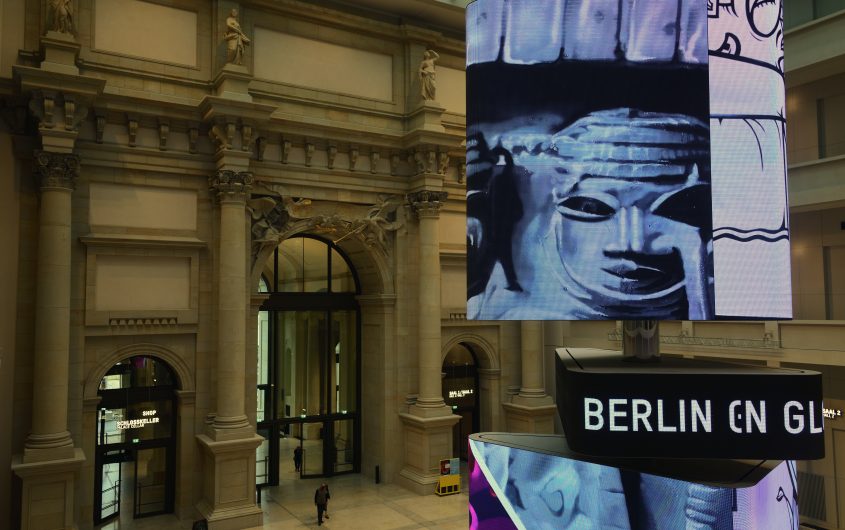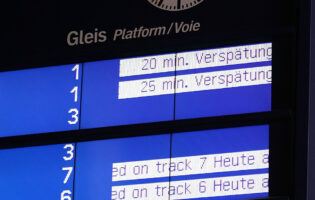
Dick Osseman via Wikimedia Commons
The Ngonnso Statue

Olivia Howard
Ms. Olivia Howard is a research intern at AICGS for the summer of 2022. She supports resident fellows with their research projects, manages databases, and helps to organize and document AICGS events.
Ms. Howard is currently completing her BA at Davidson College, with dual majors in Biology and German Studies. Within her study of the humanities, her research interests lie in cultural and societal topics, particularly concentrating on societal structures and the impact on marginalized communities.
Prior to working at AICGS, Ms. Howard conducted research with the Gideon Mendel Archive, where she was able to investigate materials involving memory culture and the German-Jewish diaspora. Ms. Howard has future plans to pursue a graduate degree within the field of biology.
Germany Moves Forward by Facing its Past
If you have been to an ethnological museum, you might be familiar with walking through exhibits titled “Africa” or “Oceania” and seeing a massive collection of artifacts. With these types of museums, there may be a tour guide who accompanies you throughout the building and retells the histories of key artifacts; however, it is not often that the history of how the museum came into possession of these pieces is told. Behind many of the artifacts that rest in ethnological museums in Europe, conversations and movements are emerging regarding the return of artifacts that were stolen from their land of origin.
In recent history, European nations, particularly Germany, have been called to become more accountable for their previous role in colonization. Germany played an influential role in the conquering of African nations, as well as lands in the Pacific, and today descendants from these areas are calling on the German government to accept responsibility for those actions. The act of taking responsibility can take many forms, one of which means accepting that many of the artifacts that reside in German museums were taken from communities by force and with little regard to their cultural significance. On June 27, 2022, The Prussian Heritage Foundation released a statement saying that they will return multiple artifacts stolen or acquired under duress to their origin countries. One of the artifacts set to be returned is the Ngonnso statue, which was taken from the Nso kingdom over 100 years ago. In the case of the Ngonnso statue, this history of colonization comes from Germany’s time in modern-day Cameroon. Germany colonized Cameroon (then German Kamerun) from 1884 to 1916.
The decision to return relics like the Ngonnso statue brings up the question of what will continue to change within German memory culture and how museums will continue to operate.
The Nso people[1] separated from the Tikari tribe in the fourteenth century after Ngnossu, the founder of the Nso tribe, led them to their new kingdom. Within the tribe’s culture, Ngnossu is seen as a mother deity, and a statue was made in her honor. From 1901 to 1903, the relationship between the Nso tribe and German troops became tenser, until German troops overthrew the ruling Nso government. The tribe was then subjected to taxation, colonial labor, and a lack of autonomy. Although it cannot be definitively said that the statue was taken by force, it is assumed that Officer Kurt von Pavel and his troops pressured the tribe into giving them the Ngonnso statue. The statue was then donated to the Berlin Ethnological Museum in 1903. The statue currently resides on display in the Humboldt Forum.
For the past thirty years, the Nso people have been requesting their statue be returned. Due to its spiritual ties to the community, many believe that its absence is the cause of much of the violence and chaos that continues to ravage the anglophone region of Cameroon, particularly in the northwest. In 2021, the Civil Society Initiative began advocating for the statue’s return to the Nso kingdom. With many artifacts residing in German museums, it takes years of advocating from communities both in the land of origin and Germany to create a movement to get the artifacts returned.
Although there is greater potential for more stolen artifacts to be returned to their communities, there are still some challenges within the process. The Prussian Heritage Foundation has yet to comment on where they are in the process of returning the Ngonnso statue; however, based on the current bureaucratic regulation surrounding artifacts in Germany, it can be assumed that the process will not be a quick one. According to German regulations, for the process of returning an artifact to begin, the community affected must identify the artifact and the museum it resides in. This can be difficult for some communities, as some German museums have not created comprehensive digital archives of their collections. Following this step, ownership must be proven through provenance research, and then the final decision is left in the hands of the federal states and local authorities. This complex pathway has slowed the return of stolen artifacts, despite the German government supporting restitution in this form.
With changing mindsets and increased awareness, now is the time to continue advocating and placing pressure on the German government to grant restitution to the lands and communities it has affected.
Currently, the Lefem sculpture, also originating from Cameroon, is impacted by this bureaucratic practice. The Lefem comes from the Bangwa region and was stolen in a violent raid by German troops in 1898. Similar to the Ngonnso statue, the Lefem holds spiritual value to the Bangwa tribe as it represents the spirit of Bangwa chiefs. The leaders of the community believe that once the Lefem is returned, peace will return to the region, which has often experienced violence. The Lefem has been stored in Cologne’s Rautenstrauch-Joest Museum, and the governing foundation has announced that it will support the return of the sculpture. However, due to the measures put in place by the German government, the fate of the Lefem now rests in the hands of Cologne’s officials.
The decision to return relics like the Ngonnso statue brings up the question of what will continue to change within German memory culture and how museums will continue to operate. The return of these artifacts reflects the changing attitude within German society and the gradual increase in influence that marginalized groups are having in getting their history remembered by a larger German audience. Efforts of decolonization can slowly be seen within German cities with tours that reflect Germany’s colonial role and impact, such as the post-colonial tour in Potsdam.
Ethnographic museums have also taken steps to become more accountable by providing descriptions of the artifacts’ acquisitions for visitors to read. There has also been an increase in freelance tour guides within these museums, which allows for the guides to tell the history of the artifacts and museum without being restricted by guidelines. Although there are pros and cons, to freelance tour guides, it signals a more ethical approach to displaying these artifacts within ethnographic museums. Since the COVID-19 pandemic, there has been an uptick in discussions to further fund ongoing projects to digitalize artifacts and have replicas on display. These projects offers previously colonized communities more leverage to ask for their artifacts back from museums that are more hesitant to return collections. The return of artifacts is a step in the right direction in Germany facing its colonial past; however, there is still a long journey ahead before all wrongs can be corrected. With changing mindsets and increased awareness, now is the time to continue advocating and placing pressure on the German government to grant restitution to the lands and communities it has affected.
[1] NantangBen Jua, “Indirect Rule in Colonial and Post-Colonial Cameroon,” in Perspectives on the State, 1995.









